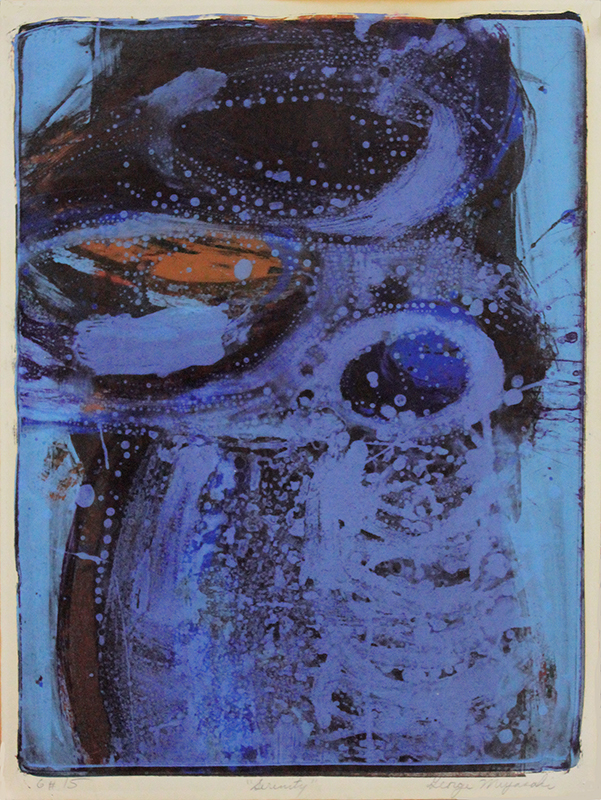
19th, 20th & 21st Century Fine Prints
707-546-7352 · fax 707-546-7924 · web: www.annexgalleries.com · email: artannex@aol.com
Serenity by George Miyasaki

Serenity
George Miyasaki
Title
Serenity
Artist
George Miyasaki
1935 - 2013 (biography)Year
c. 1956
Technique
color lithograph
Image Size
16 1/4 x 12 1/8" image
Signature
pencil, lower right
Edition Size
6 # 15
Annotations
titled in pencil, lower center
Reference
Paper
slick, ivory wove
State
published
Publisher
artist
Inventory ID
21928
Price
SOLD
Description
George Miyasaki was around 21 years old when he did this Abstract Expressionist color lithograph at the California College of Arts and Crafts where he started in a lithography class taught by Leon Goldin, and then with Nathan Oliveira and painting with Richard Diebenckorn. The artist, who was fascinated by the chemisty of lithography, had first learned the technique using Leon Goldin's method of painting the stone with asphaltum and using a single counteretched stone. David Acton explains Miyasaki's process in "The Stamp of Impulse: Abstract Expressionist Prints" on page 160: "He drew with a brush and a solution of powdered asphaltum mixed with grease and cleaning solvents, according to his own recipes. When the first improvisational drawing was complete, he inked and printed the stone in the conventional manner, pulling all the impressions for a projected edition in a single color. Then the artist washed the printing surface with acetic acid, chemically defacing the stone and negating its ability to hold ink. The image remained as a shadow to be used as a guide for the next layer of imagery, printed in a different color. Each layer of color evolved from the one before it, and the artist made all decisions about design and color during the preparation of the stone and its printing." Miyasaki, like most of the AbEx lithographers at the CCAC, used the whole stone for the image, the chipped edges and rounded corners all printed as the composition. The gestural images are rich in color and "glow" in the proper light. Like all of his work from that period, the editions were small and varied in color.
